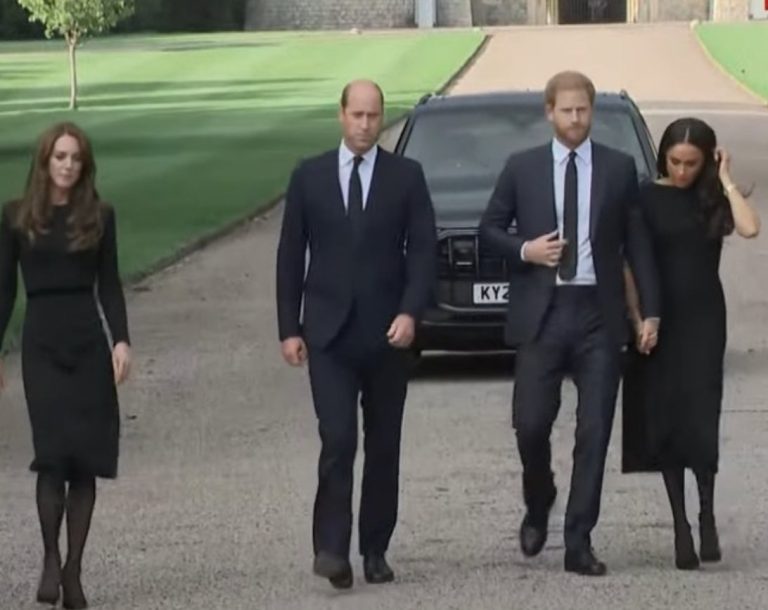Reading People’s Body Language
Have you ever wondered how to read people’s body language? It’s like having a secret superpower that allows you to understand what others are thinking and feeling, without them even saying a word.
Being able to interpret body language can give you valuable insights into someone’s emotions, intentions, and even their level of comfort or discomfort in a particular situation.
So, if you’re curious about mastering the art of reading people’s body language, you’ve come to the right place! In this article, we’ll explore the fascinating world of nonverbal communication and provide you with practical tips to help you become a body language expert. Let’s get started!

Unlocking the Secrets: Reading People’s Body Language
Welcome to our in-depth guide on reading people’s body language. Understanding nonverbal cues is an invaluable skill for decoding the thoughts, feelings, and intentions of those around you. Whether you’re a job interviewer, salesperson, or simply navigating social interactions, being able to read body language can provide you with a competitive edge. In this article, we will explore the intricacies of interpreting body language, providing you with the tools to better understand the unspoken language of others.
The Importance of Body Language
Body language, also known as nonverbal communication, plays a significant role in human interaction. While words may convey information, body language often reveals the true underlying emotions and attitudes. Understanding body language can help you decipher whether someone is interested, lying, uncomfortable, or confident, among many other verbal and nonverbal cues. By honing your ability to read body language, you can deepen your understanding of others and enhance your communication skills.
1. The Power of Facial Expressions
Facial expressions are one of the most recognizable and crucial forms of nonverbal communication. Our faces can convey a multitude of emotions, from happiness and surprise to anger and sadness. Understanding these expressions can provide invaluable insights into a person’s inner state. For example, a raised eyebrow may indicate skepticism or surprise, while a smile can indicate happiness or friendliness. It’s important to remember that facial expressions can vary across cultures, so it’s essential to consider cultural context when interpreting them.
Furthermore, microexpressions are fleeting facial expressions that occur within a fraction of a second. These involuntary expressions can reveal true emotions that an individual may be trying to conceal. Learning how to spot and interpret microexpressions can give you deeper insights into a person’s true feelings, helping you navigate conversations more effectively.
Understanding Microexpressions
Microexpressions are incredibly brief facial expressions – lasting only a fraction of a second – that reveal true emotions. These subtle expressions can provide vital clues into what someone may be feeling, even if they’re attempting to hide it. By paying close attention to microexpressions, you can gain insights into a person’s true emotions, helping you develop deeper connections and understand their underlying motivations.
There are seven primary microexpressions: happiness, surprise, fear, disgust, anger, sadness, and contempt. Each expression is characterized by specific facial muscle movements, which can be identified with practice and knowledge. By familiarizing yourself with these microexpressions, you can become more adept at reading people’s true emotions, even when they’re attempting to mask them.
2. Decoding Body Posture and Gestures
The way individuals hold themselves and move their bodies can reveal a wealth of information. Body posture and gestures often provide subconscious cues about a person’s confidence, comfort level, and engagement in conversation. When decoding body language, pay attention to the following:
- Posture: An upright and open posture typically indicates confidence and attentiveness. On the other hand, slumped shoulders and crossed arms can indicate defensiveness or disinterest.
- Gestures: Hand and arm movements can communicate enthusiasm, emphasis, or discomfort. Hand movements can accentuate speech, while fidgeting or nervous gestures may signal anxiety or unease.
- Mirror neurons: Mirror neurons are responsible for our ability to mimic the actions and emotions of others. Pay attention to whether someone is mirroring your posture or gestures, as it can indicate rapport and connection.
Interpreting Closed and Open Body Language
Body language can also be categorized as open or closed. Open body language typically signifies openness, confidence, and approachability, while closed body language conveys defensiveness, discomfort, or disinterest. Open body language may include uncrossed arms, relaxed posture, and direct eye contact, while closed body language may involve crossed arms, tension in the body, and avoiding eye contact. Understanding open and closed body language can help you gauge the level of comfort and receptiveness in a person, allowing you to adjust your communication accordingly.
3. Unlocking the Secrets of Eye Contact
Eyes are often referred to as the windows to the soul, and for good reason. Eye contact is a powerful form of nonverbal communication that can convey trust, interest, confidence, or evasion. Understanding how to interpret and utilize eye contact is crucial in effectively reading people’s body language.
Eye contact duration can vary across cultures, so it’s important to consider cultural norms when interpreting eye contact. In Western cultures, direct and steady eye contact is generally considered a sign of attentiveness and sincerity. However, in some cultures, prolonged eye contact may be viewed as disrespectful or confrontational. By familiarizing yourself with cultural norms, you can avoid misinterpreting eye contact signals.
Signs of Deception: Eye Movements and Pupillary Reactions
When it comes to reading people’s body language, eye movements and pupillary reactions can provide valuable insights into their thoughts and emotions. While not foolproof, certain eye patterns and changes in pupil size may indicate deception or emotional arousal. Here are some cues to look out for:
- Increased blinking rate: Rapid blinking can be a sign of nervousness or discomfort.
- Breaks in eye contact: Avoiding eye contact or looking away during certain topics or questions may indicate deception.
- Dilated pupils: Dilated pupils can be a sign of increased interest or attraction.
- Constricted pupils: Pupils that appear smaller than usual may indicate stress, unease, or uneasiness.
The Benefits of Reading People’s Body Language
Enhancing your ability to read body language can provide several benefits, both in personal and professional contexts. By accurately interpreting nonverbal cues, you can:
- Improve communication: Understanding body language allows you to pick up on subtle cues and adjust your own communication style accordingly.
- Build rapport: By mirroring someone’s body language, you can establish rapport and foster a deeper connection.
- Enhance empathy: Reading people’s body language helps develop empathy, enabling you to understand and relate to others on a deeper level.
- Enhance negotiation skills: By reading cues of discomfort or agreement, you can navigate negotiations more effectively and achieve mutually beneficial outcomes.
- Improve leadership skills: Leaders who can read and interpret body language can better understand their team members’ needs, motivations, and concerns, enabling them to provide appropriate support and guidance.
Tips for Improving Your Body Language Reading Skills
To become proficient in reading people’s body language, consider the following tips:
- Observe and practice: Pay close attention to the body language of those around you and practice interpreting the cues you observe.
- Read books or take courses: Expand your knowledge by reading books or enrolling in courses on body language and nonverbal communication.
- Seek feedback: Ask for feedback from trusted friends or mentors to help you assess your accuracy in reading body language.
- Practice empathy: Developing empathy can enhance your ability to understand and interpret others’ nonverbal cues.
- Record and analyze: Take notes or record observations to analyze patterns and refine your interpretation skills.
Putting It All Together: Enhancing Your Ability to Read Body Language
Reading people’s body language is both an art and a science. By understanding facial expressions, decoding body posture and gestures, interpreting eye contact, and honing your observation skills, you can unlock the secrets hidden within nonverbal communication. Remember, practice and patience are key to becoming proficient in reading body language. So, start observing and analyzing the world of nonverbal cues around you, and embark on a journey of understanding and connection.
Key Takeaways: Reading People’s Body Language
- Observing facial expressions can help you understand someone’s emotions.
- Pay attention to body posture, as it can reveal a person’s confidence or discomfort.
- Gestures, such as hand movements, can indicate someone’s level of engagement or interest.
- Eye contact can convey sincerity, interest, or deception.
- Microexpressions are fleeting facial expressions that can reveal true emotions.
Frequently Asked Questions
Welcome to our frequently asked questions section about reading people’s body language. Here, we’ll explore some common inquiries and provide insightful answers to help you better understand the fascinating world of nonverbal communication.
1. How can I tell if someone is lying through their body language?
While it’s not foolproof, there are a few signs to look out for when trying to detect deception through body language. Pay attention to excessive fidgeting, avoiding eye contact, and inconsistent gestures or facial expressions. These could potentially indicate deceit. However, it’s important to note that everyone is different, and these signals might not be definitive proof of lying. It’s crucial to consider other factors and context.
Another helpful indicator is a sudden change in vocal pitch or speech rate. Liars often experience anxiety that can manifest in these vocal cues. Additionally, watch out for defensive body language like crossed arms or leaning away, as these can signal discomfort or a desire to distance oneself from the truth.
2. What are some key body language cues that indicate interest or attraction?
There are several nonverbal cues that suggest someone is interested or attracted to you. One of the most telling is prolonged eye contact. If someone maintains eye contact with you for an extended period, it often indicates they find you captivating. Another sign is increased proximity – if someone consistently stands or sits closer to you than necessary, it can be a hint of attraction.
Additionally, pay attention to their body orientation. If they face you directly, with their torso and feet pointed in your direction, it’s a positive sign. Mirroring your movements or gestures can also indicate interest. For example, if you take a sip of your drink and they do the same shortly after, it could be a subconscious attempt to establish a connection.
3. Can body language reveal if someone is feeling anxious or stressed?
Yes, body language often provides clues about a person’s emotional state, including anxiety or stress. Common signs include increased fidgeting, foot tapping, or clenched fists. These gestures often indicate nervousness. Similarly, repetitive movements like nail biting or hair twisting are common manifestations of anxiety.
Another indication of stress is a change in posture. Stiffness or tension in the body, particularly around the shoulders and neck, can suggest heightened anxiety levels. Moreover, rapid breathing or shallow breaths may indicate a state of restlessness or unease.
4. What are the signs of discomfort or disagreement in body language?
When someone is uncomfortable or disagrees with a situation, their body language often reflects it. Crossed arms or crossed legs are common defensive postures exhibited when someone feels uneasy or defensive. Leaning away or stepping back can also indicate a desire to create physical space or distance.
Facial expressions are also revealing. A furrowed brow, tense jaw, or tight lips can signify disagreement or discomfort. Additionally, a lack of eye contact or avoiding direct interaction may indicate hesitation or disagreement with the topic at hand. Paying attention to these subtle cues can help you better understand the nonverbal responses of those around you.
5. Can body language help me understand if someone is open and receptive to communication?
Absolutely! Body language can provide valuable insights into someone’s openness. Open postures, such as relaxed arms by their side and an uncrossed body, indicate receptiveness. In contrast, closed-off postures, like crossed arms or legs and turned-away shoulders, may suggest a lack of interest or desire for interaction.
Facial expressions also play a crucial role. A genuine smile with crinkles around the eyes signifies approachability and openness. Similarly, maintaining an open and friendly gaze, without avoiding eye contact, conveys a willingness to engage. Consider these nonverbal cues when assessing someone’s receptiveness to communication, and adjust your approach accordingly.
Summary
Ever wonder what someone is really thinking? Look no further than their body language! By paying attention to things like facial expressions and gestures, you can gain valuable insights into people’s emotions and intentions. For example, crossed arms might mean they’re feeling defensive, while a genuine smile indicates genuine happiness. Being aware of these cues can help you communicate better and understand others more effectively. So, next time you’re chatting with someone, take a closer look at their body language – you might be surprised by what you discover!
In addition to facial expressions and gestures, posture can also reveal a lot about someone. A straight back shows confidence, while slouched shoulders might suggest low self-esteem. It’s important to remember that body language is just a piece of the puzzle, though. It’s always best to consider the context and combine it with other forms of communication, like verbal cues, to get a more accurate understanding of someone’s thoughts and feelings. So, the next time you meet someone, don’t forget to read their body language – it could reveal a whole new world of information!


